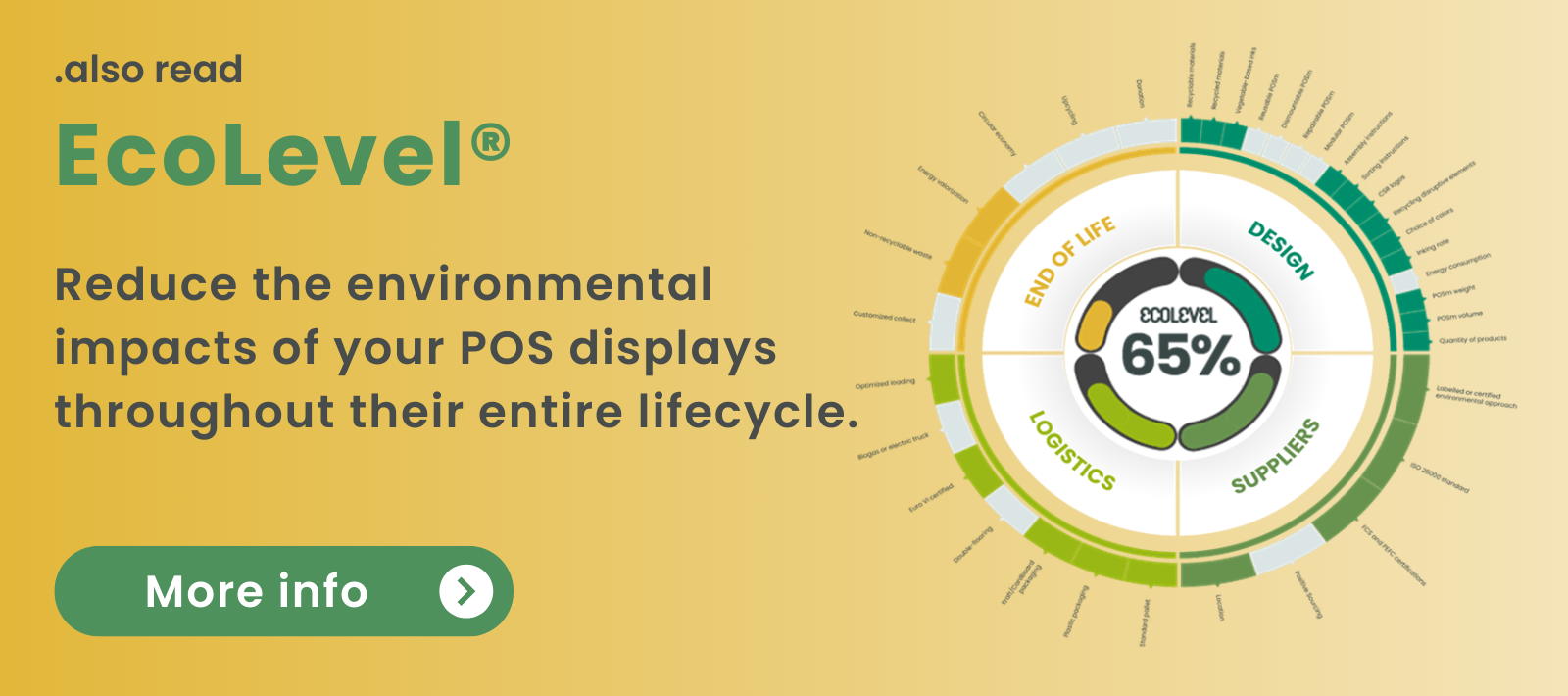Antoine Barbier, CEO of Altavia Fil Rouge: “At some point, advertisers will only want signage that meets responsible standards.”

Antoine Barbier, CEO of Altavia Fil Rouge
As the ecological transition impacts all sectors, the signage industry must evolve to minimize its environmental footprint. How can this be achieved?
From the extraction of materials for communication elements, their transport over long distances, to their transformation in factories, signage is particularly polluting. Recently, more alternatives have emerged to help companies transition to less impactful processes and drive the ecological transition of signage. What do these alternatives entail?
We spoke with Antoine Barbier, CEO of Altavia Fil Rouge, an agency specializing in merchandising, signage, and staging, fully committed to these new practices.
What is the value proposition of Altavia Fil Rouge?
We have two main areas of expertise united around a common cause: enhancing brand image in retail spaces. We install all communication elements, focusing first on merchandising. We manage a team of 160 merchandisers who set up POS materials to highlight products. Our second focus is signage, where we work with retailers to improve their image by updating signs and other communication elements that enhance a retail space.
How mature are your stakeholders in terms of eco-responsibility?
In the product promotion world, these topics are quite prevalent. Communications using cardboard are being challenged, as are packaging materials. End-of-life considerations are now part of the equation, and reverse logistics is being implemented. POS is an ecosystem sensitive to these issues. These concerns are less common in retail, but they are still present.
What is the ecological cost of signage?
The raw materials used for communication elements are derived from petroleum. There is also long-distance transport and factory transformation. The end-of-life impact of these materials is significant because they are made of PVC, which cannot be incinerated due to toxic fumes, so they are buried. It’s estimated that it takes 1,000 years for PVC to degrade. A communication piece made this year will still be around in 1,000 years. However, we now have PVC-free materials available, and we are starting to achieve much nobler end-of-life options through energy recovery. These materials can be incinerated, and the heat generated can power factories, such as cement plants. They can also be ground into powder, and even further, we can recover, wash, heat, and grind them into polypropylene (PP) granules, which are reinjected into the industrial circuit to make new materials.
Does circular economy play a part in this equation?
Absolutely. Although we lose some properties each time we heat and reform the materials, they still have many uses. The granules can be used to make various products, including car parts, fridge linings, and insulation elements. There are many possible reuses, and in theory, we can reuse the granules seven times. Each reuse avoids the extraction, transport, and transformation of new materials, as well as petroleum processing.
Is it possible to quantify the reduction in impact achieved?
Yes, we do quantify the reduction. In our proposed process, collected materials are sent to a reprocessing factory. The received tonnage is recorded in a Cerfa document, which can be included in our clients’ energy balances and CSR reports. So far, we have clients who have replaced PVC but none who have subscribed to the full offer of using, recovering, and reusing materials. However, we promote this offer in every commercial proposal.
Is there ongoing research and development to improve existing solutions?
Yes, there is. We partner with a materials importer to conduct durability tests. Since 2016, we have collaborated on a range of responsible materials. Another focus is adhesives. We aim to balance adhesive strength with chemical use to achieve the best possible result.
Given that adhesives are toxic and polluting, are there biological alternatives?
There are adhesives with less chemistry, but they have shorter durability. However, while adhesive is the most toxic element, its overall weight in signage is relatively minor and doesn’t heavily impact the media’s ecological footprint.
What has the most impact then?
The primary toxic agent is PVC. It has been removed from most consumer products, though the industry still uses it heavily. Eliminating PVC is crucial, partly because it’s petroleum-based. Removing PVC is relatively simple, but the challenge is justifying the price difference, even though it’s not huge.
Because it costs more?
It costs slightly more, a few percent higher. At Fil Rouge, we offset this difference by reducing our margin so that price is not a barrier. This is also the position of our materials supplier.
Are Fil Rouge’s clients mostly sensitive to these issues?
There is a before and after Covid. It has long been an idealistic goal, but since the health crisis, demand has surged, although it hasn’t necessarily become a priority for all companies. Some fear color or quality alterations. Others are very attached to their habits and don’t want to change. Not all our clients have switched yet. By default, when there are no specific material instructions, we switch to a PVC-free solution.
Can the National Low Carbon Strategy, aiming for emission neutrality by 2050, accelerate this transition?
I hope so. I believe collective awareness is advancing. The commitments made increasingly compel the industry to address this issue. Gradually, we will encompass all problems. As an agency, we must be ready to respond and offer solutions. So, it’s crucial to connect with emerging solutions now. I think the transition will progress. At some point, there will be a shift, and advertisers will only want signage that meets responsible standards. Thus, we must contribute to their development.
What changes can we expect in the near future?
Currently, we offer a second life that is not yet complete. Our goal is to improve by recycling materials noble enough to be used for media printing, creating a closed-loop where an investment in our printing materials can almost be reused for the next campaign because we will know how to transform and remanufacture material for visual communication.

